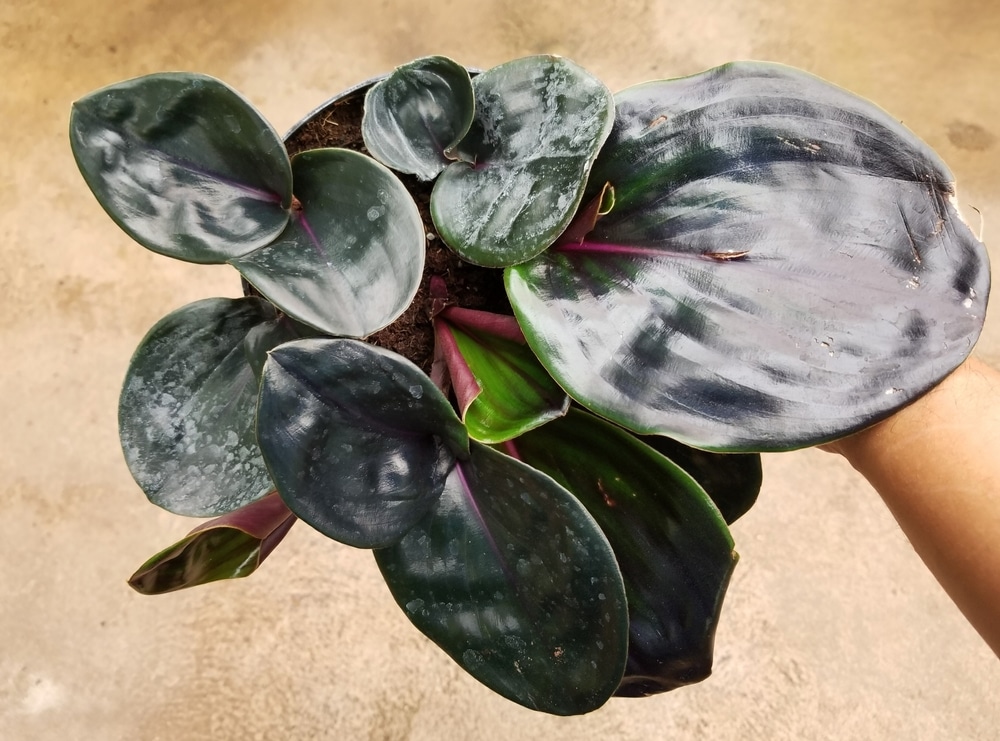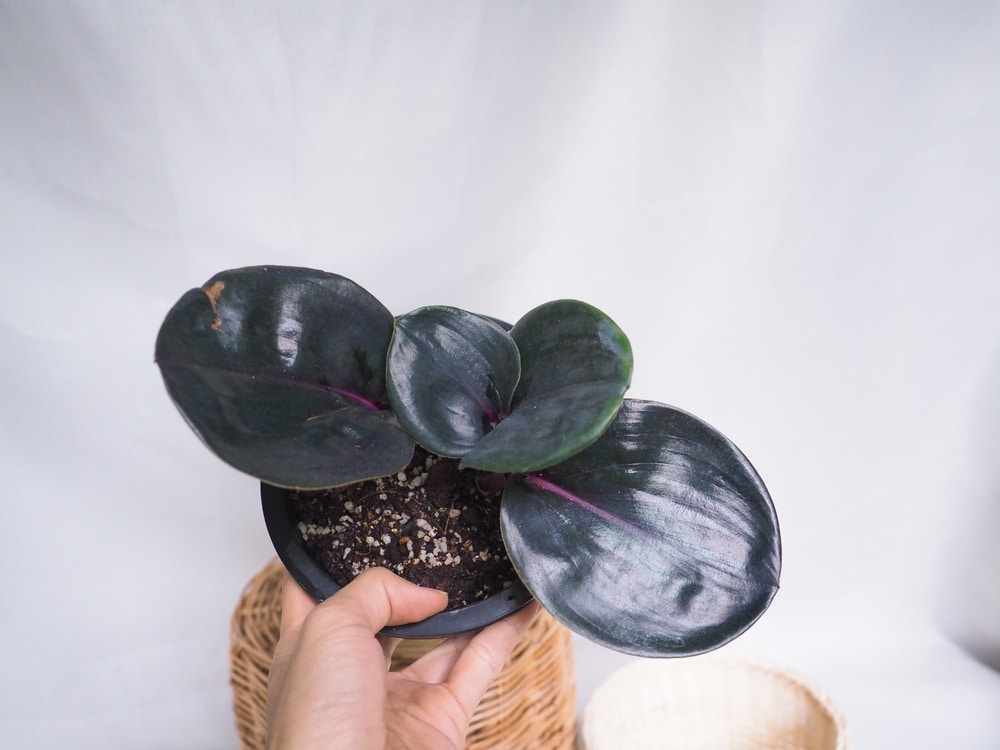Geogenanthus ciliatus is among the rare but classic house plants that can be randomly found in a few classic homes. These plants’ unique leaf structure and color make them a centerpiece of beauty in all homes where they are nurtured.
If you wish to add beauty to your home, especially with indoor plants, you can consider planting a geogenanthus ciliatus. However, like most plants, geogenanthus ciliatus can not grow in all conditions. It must be planted in an area that can supply almost all its growing requirements.

| Botanical Name | Geogenanthus ciliatus |
| Common Name | Geo plant |
| Plant Type | Perennial |
| Flower Color | Small purplish flowers |
| Size When Mature | 24 inches |
| Bloom Time | No specific blooming time. Only blooms when all the right growing conditions are met |
| Sun Requirements | Partial sun |
| USDA Hardiness Zones | Zone 11 to 12 |
| Soil PH Range | 6.1 to 6.9 |
| Soil Type | Slightly acidic, and well-draining soil |
| Water Needs | High |
| Native Area | South America rainforests |
If you are considering planting geogenanthus ciliatus, consider some of its requirements illustrated in the table below and the general care guide covered in this article.
What you need to know about geogenanthus ciliatus
Commonly referred to as the Geo plant, geogenanthus ciliatus is a flowering plant that comes from the Commelinaceae plant family, where other flowers like the spiderwort and dayflower belong. Given all the right growing conditions, it blooms any time of the year.
The geo plant is native to South American rainforests. It naturally grows in the rain forests of Ecuador, Peru, and Columbia. All in all, it is commonly popularized as a decorative house with simple growth patterns. Many people love it because it is non-toxic and will not harm your pets or small babies whenever they touch it.
Geogenanthus ciliatus is the botanical name of a unique tropical plant but is still very rare to find. It features large, purple-black leaves that give an impressive out-of-this-world appearance. The leaves are also thick and waxy, thus standing out from all other houseplants. The plant can grow to about 24 inches wide when it matures.
It is easy to propagate from stems and requires minimal care. This makes it easy for homeowners to get the plant even though it is a rare houseplant. When given the right care and growing condition, the plant will thrive to give you the purplish black hue you have always admired to add to your range of indoor natural decor.
How to care for geogenanthus ciliatus
Here’s everything you need to know about growing and caring for a thriving geo plant
Light
Geo plants require minimum light and can do perfectly well in shades. Keep the plant away from the windows or anywhere that receives direct sunlight. Unlike other thick leaf plants that enjoy plenty of light, geo plant leaves can get damaged by high sunlight intensity.
It is even preferred that you use artificial lights just above the plant. You can keep the plants in a terrarium with fluorescent bulbs to easily control the amount of light reaching the plants.
Water and soil need
A houseplant soil mix or generic indoor soil is suitable for growing a geo plant. While preparing the soil, ensure it is well drained because the plants do not like waterlogged soils. It grows well in slightly acidic soils with a pH of 6.1 to 6.9.
The flower originates from rainforests and therefore requires more water supply. Make sure you frequently water without leaving the soil to dry out. Always monitor the soil moisture and apply water when at least the top two inches of deep soil are dry. This transforms into a watering pattern of at least once and at most twice every week.
The temperature needs
The plant likes warm climates and may not survive in temperatures below 50 degrees Fahrenheit. The plants thrive in USDA zones 11 to 12, where temperatures stay warm all year round. However, you can grow geo plants anywhere indoors and provide the ideal temperatures ranging from 50 to 75 degrees Fahrenheit. That way, the plant will survive but may not bloom.
Fertilizer
Fertilizing geogenanthus ciliatus is best done in summer and spring when the plant is undergoing rapid growth. Use a liquid fertilizer with an equal NPK ratio to ensure the effective distribution of nutrients to the plant. Before applying the fertilizer, dilute it to about half its original strength to prevent fertilizer burns. You can also water the plant before applying fertilizer to reduce the risk of chemical burns.
Common pests and diseases
Root rot is the most common fungal disease that attacks geogenanthus ciliatus plants. This problem mainly arises when the plant is overwatered. When your plant is infected, you will notice rot spots on its thick leaves.
Mealybugs bugs, aphids, and spider mites also pose a threat to geo plants. They feed on the leaves’ sap and nutritious matter, leaving the plant weak.
Propagation
Use stem cuttings to propagate geogenanthus ciliatus. The right time to propagate is in spring, when the plant is actively growing. Pick a healthy stem that has developed a few leaves, cut it beneath the lower leaf, and dry it on a towel for 24 hours before dipping it in a rooting hormone. Plant in freshly prepared soil. Water the soil and provide warmth and support for the new stem.
You can also propagate using the plant’s rhizome nodes.

